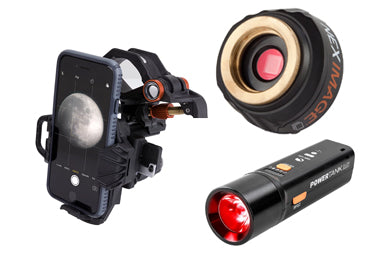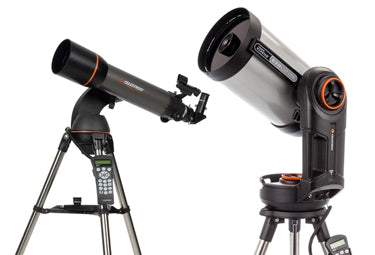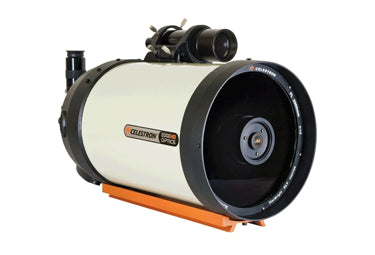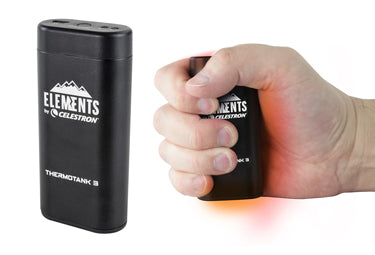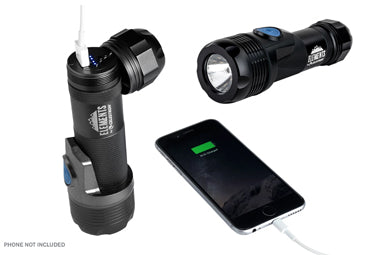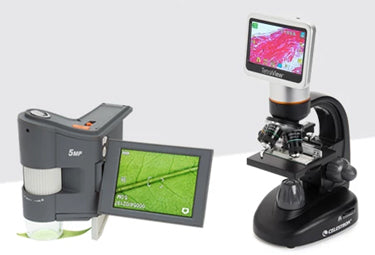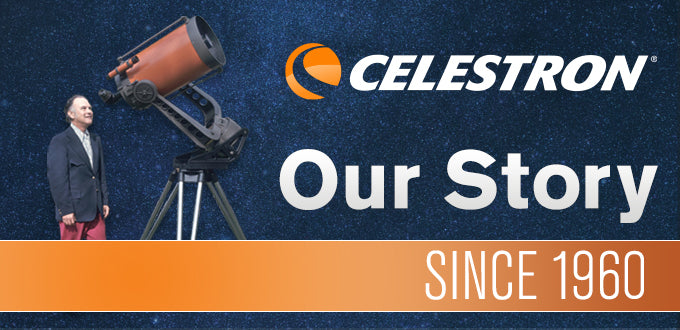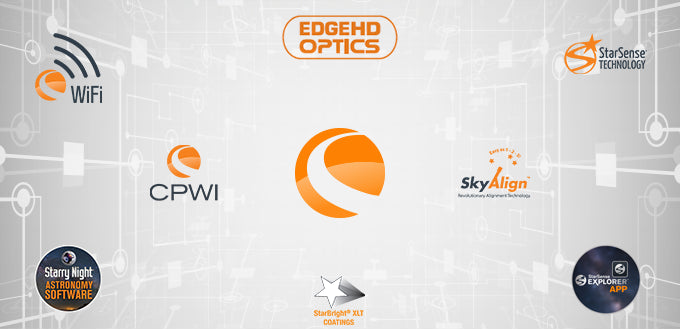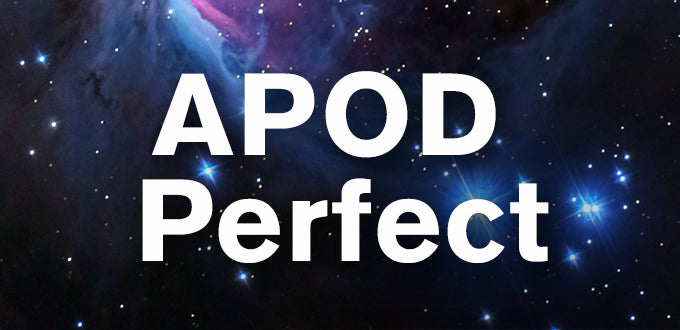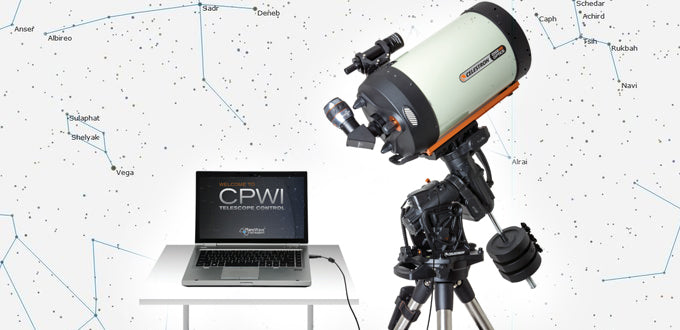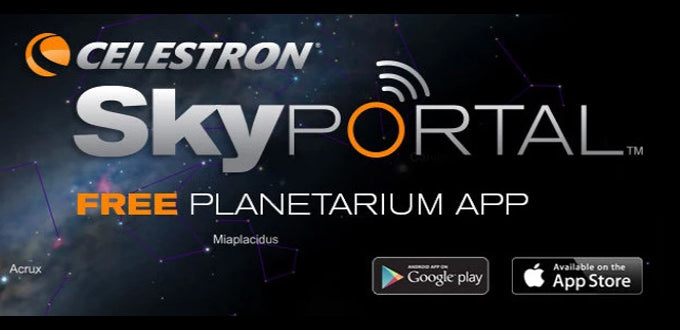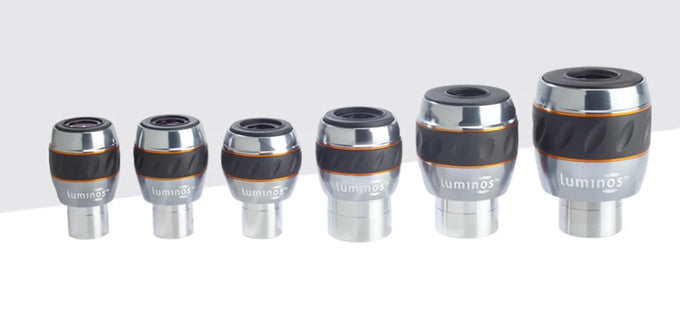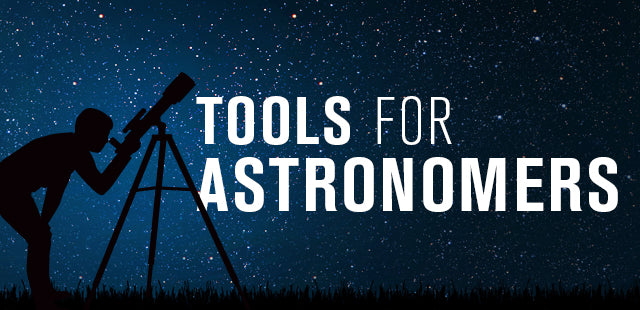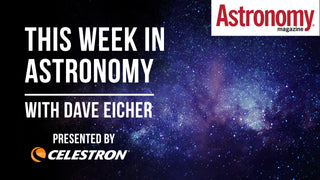The Ultimate Guide to Observing Solar Eclipses
January 26, 2023

Where were you on Monday, August 21, 2017, for The Great American Eclipse? For eclipse watchers in the U.S. that eventful day, the Sun, Moon, and Earth fell into perfect alignment and the Moon's shadow traversed a narrow path across the continental U.S.
For observers on the ground, the 2017 eclipse, like all eclipses, unfolded in stages. Soon after first contact, a noticeable "cookie bite" appeared to mark the Moon's journey across the Sun's disk. As time passed, the landscape suddenly began to bask in strange hues as if something unearthly was slowly dimming the light. Temperatures dropped, insects began buzzing as at dusk, the sky continued darkening, and a few brighter planets emerged. Suddenly, a glorious diamond ring appeared as the last glimmer of sunlight peeked out from behind the Moon. Next came totality—and the heavenly illuminated corona surrounded the black lunar disk. People gasped in disbelief while others jumped in euphoria, crying or screaming in unison at the most amazing and beautiful natural phenomenon known to humanity.
If you were one of the millions of lucky viewers in the shadow of the Moon that day, witnessing day turn to night will forever be engrained in your memory. Even if cloud cover spoiled your view, darkness still fell upon the landscape for a few minutes before sunlight restored order and normalcy returned.
Whether you were moved by what you experienced and can't wait to see another eclipse, or you have never experienced one before, we have great news! Two major solar eclipses are coming to the U.S. in 2023 and 2024—one an annular and one a total. So let's refresh our knowledge about solar eclipses and learn how we can safely view them. Unlike lunar eclipses, solar eclipses can be hazardous unless you take the right safety precautions. Protective filters or other specialized gear is mandatory, which we’ll explain in detail. If solar eclipses interest you, read on!
What is a Solar Eclipse?
A solar eclipse happens when the New Moon comes between the Sun and Earth, casting its shadow (umbra) on Earth. In an amazing celestial coincidence, the Sun and Moon appear roughly about the same angular size in the sky as viewed from Earth, even though the Sun is about 400 times wider than the Moon and 400 times farther away. Other planetary moons in the Solar System can appear bigger and hide the Sun's disk completely or appear smaller as they move across the Sun's disk. But they do not appear to have a near-perfect fit like our Sun and Moon, as seen from Earth. How fortunate we are to experience this happy accident from good ol' Earth!
Because the Moon completes one cycle of phases from New Moon to New Moon about every 29.5 days, you might ask why a solar eclipse doesn’t occur during every New Moon. The answer has to do with the Moon’s elliptical orbit, which is tilted about 5 degrees relative to Earth's orbital plane. Eclipses can occur only when the Moon's orbital plane intersects the ecliptic, the Earth-Sun plane. Thanks to the tilt, the Moon's shadow usually passes above or below Earth. However, about every six months, on average, the Sun and Moon line up at a pointed called a Node, and the alignment becomes favorable. A New Moon will cross at least part of the Sun's disk, causing an eclipse. Eclipses come in pairs—a solar eclipse occurs about two weeks before or after a lunar eclipse, and vice versa.

Saros Cycle
Solar eclipses occur between Saros cycles. Similar solar and lunar eclipses recur every 6,585.3 days (18 years, 11 days, 8 hours). Scientists call this length of time a Saros cycle. Two eclipses separated by one Saros cycle are alike and occur at the same Node. The Moon's distance from Earth is nearly the same, and they happen at the same time of year. Notice the path of totality from the August 11, 1999, solar eclipse that occurred over Europe and the Middle East compared to the path of totality from the August 21, 2017, Great American Solar Eclipse. After about 18 years, the eclipse paths are similar, but the 2017 eclipse shifted ⅓ of the way westward.

Shadow Components
The Moon's shadow consists of two parts: the umbra, a dark cone through which no direct sunlight enters, and the penumbra, the lighter outer shadow, in which some sunlight reaches Earth but is partially blocked by the Moon. Observers within the dark umbra will see a total solar eclipse as the Moon's disk completely obscures the Sun. Any observers outside this narrow path and inside the lighter penumbra will see the Sun's disk partially blocked by the Moon's disk. Observers will only view a partial eclipse inside the penumbra unless the umbra reaches them.
Because the Moon's distance from Earth varies, the width of the Moon's shadow is unique. The umbra's width can vary considerably depending on the eclipse and the angle at which the shadow reaches Earth—approximately 90 miles (near the Earth's equator) to 600 miles (at the poles).

Due to the Sun and Moon's orbital variations, not all in-line solar eclipses are total. During a lunar cycle, sometimes the Moon is closer to Earth and appears slightly larger (a phenomenon called “perigee” or a “Supermoon”). Sometimes the Moon is farther from Earth and appears slightly smaller (called “apogee”).
Even the Sun's distance from Earth can vary depending on the season. In January, the Sun is closer to Earth (a position called “perihelion”) and appears slightly larger. while in July, the Sun is further away from Earth and appears slightly smaller (called “aphelion”).
So, the distance between the Sun, Moon, and Earth is not always the same. But when they line up favorably, totality or annularity can extend for several minutes. The Moon's umbra may or may not always reach the Earth. If the eclipse is central and the lighter area of a shadow appears beyond the umbra, in the antumbra, observers on Earth see an annular eclipse instead.

Frequency and Types of Solar Eclipses
Solar eclipses can occur twice per year and rarely up to five times annually, with a total eclipse occurring about every 18 months. The last time there were five solar eclipses in a year was in 1935. There will not be another year with five solar eclipses again until 2206. It is impossible to have two total solar eclipses back-to-back. But it is possible to have two partial solar eclipses in a single month, which occurred on July 1 and 31, 2000.
There are four types of solar eclipses: total, annular (ring of fire), hybrid, and partial.
 |
The grandest of all solar eclipses is the total solar eclipse. This eclipse occurs when the Moon moves between the Sun and Earth and casts its dark shadow, the umbra, on the Earth's surface. Those fortunate to be within the umbral shadow path will witness totality. Those in the lighter penumbra will see a partial eclipse. Totality can last for a few seconds to a maximum of 7 minutes and 32 seconds during the most favorable alignment. |
 |
A partial solar eclipse occurs when the Moon comes between the Sun and Earth, but the Moon only covers a portion of the Sun's disk. The Sun, Moon, and Earth do not align perfectly, so the Moon casts only the outer part of its shadow, the penumbra, on Earth. From our perspective on Earth, partial eclipses resemble a "cookie bite" that has been taken from the Sun's disk. All solar eclipses begin and end in partial phases, whether total, annular, or hybrid. A partial solar eclipse is the most common solar eclipse. They can appear as a tiny "bite" of the Sun's disk or a very deep "bite." The fraction of the Sun's diameter covered by the Moon is called eclipse magnitude. |
 |
Sometimes, the Sun, Moon, and Earth are in line, but the Moon's umbral shadow does not reach the Earth's surface. If the Moon is near its farthest point from Earth, the outer edge of the Sun will remain visible as a "Ring of Fire" when the Moon passes across the Sun's disk. “Annular” is derived from the Latin word for ring, "annulus." Annular solar eclipses are still a form of partial eclipse, so they’re not as spectacular as total solar eclipses. Day does not turn to dusk and, in most cases, conditions seem like an ordinary day. An annular solar eclipse can last from a few seconds to a maximum duration of 12 minutes and 30 seconds, depending on the alignment. |
 |
A hybrid solar eclipse is the rarest type of eclipse, occurring just a few times per century. During this eclipse, its appearance changes as the Moon's shadow travels across Earth's curved surface. A hybrid solar eclipse occurs when the Moon's distance is near the maximum distance for its umbral shadow to reach Earth. Due to Earth's curvature, the Moon's umbra doesn't quite reach Earth at the beginning and near the end of its shadow's path, resulting in an annular solar eclipse. However, towards the middle of the shadow's path, the Moon's umbra reaches Earth's surface, resulting in a total solar eclipse. Outside of the path, a partial solar eclipse is visible. A hybrid solar eclipse will take place on April 20, 2023, visible in the Southern Hemisphere. |

Stages of a Total Solar Eclipse:
- First Contact - partial eclipse begins - The Moon begins to pass in front of the Sun, resembling a "cookie bite" in the solar disk.
- Second contact: totality begins. The Moon contacts the opposite edge of the solar disk from the first contact point as a bright solitary point of light of the Sun appears as a diamond ring. Darkness falls.
- Maximum eclipse: The eclipse is at the midway point as the Moon completely covers the solar disk. The Sun's corona will be seen in all of its glory! Observing a total solar eclipse during totality is safe without using safe solar filters. You must wear solar protection for maximum eclipse for annular and partial eclipses.
- Third contact: totality ends. The Moon begins moving away from the solar disk, and the bright solitary point of light of the Sun reappears as a diamond ring. The partial eclipse resumes, and daylight returns.
-
Fourth contact: partial eclipse ends. The eclipse ends as the Moon exits the solar disk.

Stages of an Annular Solar Eclipse
- First contact: partial eclipse begins. The Moon begins to pass in front of the Sun, resembling a "cookie bite" in the solar disk.
- Second contact: annular eclipse begins. The Moon enters the solar disk as the annulus or ring begins to form.
- Maximum eclipse. The Moon moves completely inside the Sun's disk but is not large enough to completely cover the disk, leaving an evenly spaced "Ring of Fire" around the Sun's edge. The Sun's corona will not be visible. Safe solar filters must be worn throughout the entire annular eclipse, including annularity.
- Third contact: annular eclipse ends. The Moon begins moving away from the Sun's disk, and the annulus or ring is broken. The partial eclipse resumes.
- Fourth contact: partial eclipse ends. The eclipse ends as the Moon exits the solar .
How to Safely Observe the Sun
The Sun is a fascinating ball of hot, swirling gases; its surface can be very interesting to observe. However, there are many inherent risks involved with solar observation that everyone needs to be aware of—especially during a solar eclipse. The Sun's ultraviolet and infrared rays can damage your eye's retina, leading to loss of vision and permanent blindness!
If you view the Sun during an eclipse or at any other time, your first concern should always be protecting your eyes. As long as you carefully follow all the rules and guidelines below, solar viewing is safe—not to mention a fun and rewarding part of your astronomy hobby.
WARNINGS, RULES, AND GUIDELINES FOR SAFE SOLAR OBSERVING
- Never look directly at the Sun - even if it is low on the horizon - with the naked eye or with any optics without proper solar safe filters. Permanent and irreversible eye damage may result. Your vision could still be damaged even if you don't feel discomfort because there are no pain receptors in the eye. You can damage your eyes and not know it until you start having blind spots in your vision.
- Never use your optics to project an image of the Sun onto any surface. Internal heat build-up can damage the optics and any accessories attached.
- Never leave your optics unsupervised. Make sure an adult who is familiar with the correct operating procedures is with your optics at all times, especially when children are present.
- Never take a risk by using uncertified solar filters. Solar products must conform to and meet the transmission requirements of ISO 12312-2, Filters for Direct Observation of the Sun. EN 1836:2005 + A1:2007 (E) for an E15 Filter for the Direct Observation of the Sun and, AS/NZS 1338.1:2012, Filters for Eye Protectors. All EclipSmart Solar Safe product conform to these standards.
- Always check your solar filters for any damage or tiny holes before using it. Throw away the filter if any damage is detected.
- Do not use unsafe filters. Some examples include black-and-white and color negatives, exposed film, X-rays, smoked glass, neutral density filters, and polarizing filters. Stacking multiple pairs of sunglasses is also unsafe, no matter how dark the glasses are. Most of the items listed above transmit high levels of infrared radiation that can cause a thermal retinal burn and permanently damage your vision.
- If using a solar filter on your telescope, make sure you use a certified filter that covers the telescope's entire front aperture. Always remove your telescope's finderscope or ensure its lens caps are secured, or else concentrated sunlight will burn out the crosshairs and could even burn your skin if you are within range of the eyepiece!
- Never use a solar filter that screws into the bottom of your telescope's eyepiece. The glass in the filter could crack from heat buildup, allowing unfiltered sunlight to pass through and cause permanent damage to your eye.
- Never use a solar filter that is designed to be looked through (such as solar glasses) with your telescope. Never place this type of solar filter directly over your telescope's or binocular's eyepiece(s) to observe the Sun. The intense heat can burn right through your solar glasses.
For more information on solar safety, check out this video:
For other important solar safety videos, click here.
EclipSmart Solar Safe Products
The best and safest way to observe the Sun is to use Celestron's EclipSmart solar products that feature Solar Safe filter technology, which provides the ultimate protection from harmful solar radiation, including I.R. and U.V. light, plus 99.999% of visible light. Celestron Solar Safe filter technology is GUARANTEED SAFE for direct solar observation and has been independently tested by SAI Global Assurance Services.
Solar Safe products conform to and meet the transmission requirements of ISO 12312-2, Filters for Direct Observation of the Sun, EN 1836:2005 + A1:2007 (E) for an E15 Filter for the Direct Observation of the Sun and, AS/NZS 1338.1:2012, Filters for Eye Protectors.
ISO 12312-2 certified safe solar filters prevent more than 99.999% of visible light from reaching your eyes. Here are some of our most popular EclipSmart products that will allow you to observe the Sun safely:
 |
White Light Solar Filters A white light solar filter that works in the visible spectrum is an ideal way to turn a nighttime astronomical telescope into a daytime solar observing telescope. It is designed to view the solar photosphere and sunspots. Solar filters can be metal on glass (the most durable and costly), aluminized polyester film (also known as aluminized Mylar), and polymer. These filters easily attach to the front cell of different optical telescopes and come in various sizes that lock into place or are snugly fitted. For smaller aperture refractor scopes, Celestron's EclipSmart solar filters have setscrews on the side of the filter housing to grab onto the lens shade for a secure fit. Larger EclipSmart solar filters for Newtonian, SCT, and EdgeHD are snugly fitted but also come with Hook and Loop straps for added security. Each EclipSmart solar filter provides a more natural, orange-tinted view of the solar disk and features scratch-resistant polymer produced by American Paper Optics. They feature Solar Safe filter technology, the ultimate protection from harmful solar radiation, including I.R. and U.V. light, and 99.999% of visible light. |
 |
Solar Eclipse Glasses Solar eclipse glasses, such as Celestron's EclipSmart Solar Safe Eclipse Glasses, are easy to wear and feature Solar Safe filter technology for the ultimate protection from harmful solar radiation, including both I.R. and U.V. light, and 99.999% of visible light. They provide a more natural, orange-tinted view of the solar disk. These glasses are perfect for observing the sun any day or viewing solar events, such as the partial phases of a solar eclipse. Solar glasses should never be used as solar filters for a telescope. |
 |
Solar Safe Binoculars Celestron's EclipSmart Solar Binoculars are compact and easy to transport while traveling to a solar eclipse viewing location. These white-light solar viewing binoculars provide a full, magnified view of the entire solar disk. They also feature Solar Safe filter technology for the ultimate protection from harmful solar radiation, including both I.R. and U.V. light and 99.999% visible light. |
 |
Dedicated White-Light Solar Telescope Celestron's EclipSmart Travel Solar Scope 50 is a true white-light solar scope for the observer on the go. It's lightweight, compact, and easy to transport while traveling to a solar viewing event. It's an ideal instrument for viewing the solar photosphere and sunspots. The 50mm refracting solar scope uses Celestron's Solar Safe, ISO-compliant, full-aperture glass filter material to ensure the safest view. This solar scope offers much higher magnifications for viewing sunspots or planetary transits than you would otherwise get using solar eclipse glasses or binoculars. |
See the full line up of Celestron EclipSmart Products
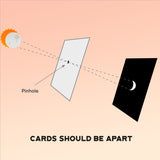 |
Pinhole Projection Time-tested and proven safe, this is a great indirect method of observing the Sun, especially during solar eclipses. Take two pieces of cardboard or paper plates and punch a tiny hole in one to allow sunlight to pass through onto the other card. The further you separate the cards from each other, the larger the image scale will be, but the solar image will be dimmer. |
 |
Interlacing Fingers No additional equipment is required for this indirect viewing method. Just interlace your fingers, leaving small gaps between them. Stand with your back towards the Sun and allow sunlight to pass through your fingers and onto the ground. During the partial phases of a solar eclipse, you can see tiny crescents being projected. |
 |
Tree Leaves Yet another indirect method of viewing the partial phase of a solar eclipse is to allow nature to play a role. Sunlight filtering through tree leaves will create countless crescent Sun images on the ground or a wall. In an annular eclipse, you can see many circle-like shadows with bright rings during maximum coverage. It truly is a sight to see! |
What to look for during a solar eclipse:
 |
Baily's beads During a total or annular solar eclipse, you'll see this effect just before and just after totality or annularity, when only a few points of sunlight are visible at the edge of the Moon. Baily's "beads" are caused by the last bits of light shining between the jagged edge of mountains and craters along the lunar surface. |
 |
Corona As totality begins, the magnificent crown jewel appears like a divine light surrounding the Moon's dark silhouette. The corona stretches millions of miles into space. It always surrounds the Sun, but we can only see it with the naked eye during totality. The Sun's overwhelming light renders the corona invisible at other times. The corona is the scorching upper atmosphere of the Sun and reaches a temperature of more than a million degrees Fahrenheit. |
 |
Diamond ring Observers can only enjoy this phenomenon for a few seconds before second contact and after third contact during a total solar eclipse. It is not visible during an annular eclipse. Look for a solitary point of light resembling a wedding ring with a brilliant diamond. Imagine how many marriage proposals occurred during past total solar eclipses when the diamond ring was visible. |
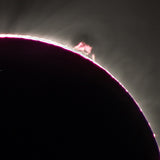 |
Prominences Pink or reddish, thin, gaseous formations appear like flares and can be seen during totality above the surface of the eclipsed Sun. Prominences usually occur over regions of solar activity, such as sunspot groups. |
 |
Sunspots These regions of the Sun's photosphere are home to intense magnetic activity. Sunspots appear dark and are temporarily cooler than other areas on the surface of the Sun. They usually appear in pairs of opposite magnetic polarity and can grow several times the size of Earth's diameter. |
 |
Shadow bands Look for thin, wavy bands of lines that alternate between light and dark on white surfaces like a sheet or across the landscape seconds before totality. These bands are mysterious but fascinating to see with your eyes. Try to capture them on video during the next total solar eclipse.
|
 |
Approaching shadow During the last few seconds before totality, look to the west for the approach of the Moon's shadow as it rushes in and engulfs you in darkness.
|
 |
360-degree glow During totality, look all around the horizon, and you'll notice the bright sky is filled with yellow and orange colors of sunrise or sunset. This phenomenon occurs because the Moon's umbral shadow has not reached there, and the Sun is still shining as a thin crescent.
|
 |
Planets and Stars As darkness falls, look for some of the brightest planets and stars that will suddenly appear in the sky. Because Mercury and Venus orbit close to the Sun, they should be easily visible if they're in an ideal position.
|
 |
Plants and Wildlife Pay attention to bats, birds, insects, plants, and other wildlife around you during a total eclipse. Are flowers blooming, animals out and about, or insects making noises as they would during evening hours? What can you hear? Perhaps chickens will return to their coops during totality, and roosters will begin to crow as the sunlight reemerges.
|
 |
Temperature drop Keep a thermometer handy; the temperature changes during a total eclipse! How much change will vary based on your location and time of the year. The drop in temperature can occur quickly, so you may want to bring a jacket just in case.
|
How to Safely Photograph a Solar Eclipse
It is without question that when the Moon passes in front of the Sun, nearly everyone with a camera or a smartphone will want to capture that once-in-a-lifetime moment as an everlasting memory of one of the greatest natural phenomena known to humankind—a total solar eclipse. With proper planning, practice, and a great emphasis on safety, achieving great results is possible. However, you must remember these safety tips:
- Do not point your camera or smartphone at the Sun unless the camera is outfitted with a certified safe solar filter, or you could cause irreparable damage to your equipment.
- The only time it is safe to photograph or look at the eclipsed Sun without a safe solar filter is during totality, when the Moon's disk completely obscures sunlight.
- Never look at the Sun through your camera's viewfinder, as unfiltered sunlight will damage your eyes—not to mention your camera.
- Never aim your unfiltered camera at the Sun while using the camera's LCD screen for live view. Sunlight will damage your camera's sensor.
Do not focus all of your attention on picture taking during totality. Take a few shots but don't forget to look up and take in the view. No photograph will capture the beauty of totality more than your naked eyes! Here are some more tips from Team Celestron member Grant Regen
Upcoming Solar Eclipses
|
Date |
Solar Eclipse Type |
Where the Eclipse is Visible |
|
Oct. 2, 2024 |
Annular |
The eclipse path will begin in the Pacific Ocean off the coast of South America and move across parts of southern Chile and Argentina. A partial eclipse will be visible throughout most of southern South America. |
|
March 29, 2025 |
Partial |
This partial eclipse will be visible throughout Greenland and most of northern Europe and northern Russia. It will be best seen from Canada with 93% coverage. |
|
September 21, 2025 |
Partial |
This partial eclipse will only be visible in New Zealand, Antarctica, and the southern Pacific Ocean. It will be best seen from New Zealand with 76% coverage. |
|
Feb. 17, 2026 |
Annular |
This eclipse will only be visible in Antarctica and the southern Indian Ocean. |
|
Aug. 12, 2026 |
Total |
The path of totality will begin in the Arctic Ocean off the Northern coast of Russia. It will move across Greenland, Iceland, and the Atlantic Ocean before ending in Spain. A partial eclipse will be visible Alaska, Canada, western Africa, and the northern United States. |
|
February 6, 2027 |
Annular |
The path of the eclipse will begin in the southern Pacific Ocean and move across Chile and Argentina before moving into the Atlantic Ocean. A partial eclipse will be visible throughout most of South America and parts of western Africa. |
|
August 2, 2027 |
Total |
The path of totality will begin in the Atlantic Ocean off the coast of Africa and move across Morocco, Spain, Algeria, Libya, Egypt, Saudi Arabia, Yemen, and Somalia before moving out into the Indian Ocean. A partial eclipse will be visible throughout most of northern and central Africa, Europe, western Russia, the Middle East, and India. |
Only during totality will you be able to enjoy the true spectacle of an eclipse. Even in 99% coverage, you won’t see day turn to night, the diamond ring, the corona, a 360-degree orange glow along the horizon, or stars during the day. Get close to the shadow's centerline to enjoy totality for as long as possible.
A total eclipse of the Sun is one of nature's most spectacular and awe-inspiring sights. There is no other celestial phenomenon that can compete with it.
Clear skies!
Other articles you might be interested in: Ultimate Guide to Observing the Universe

